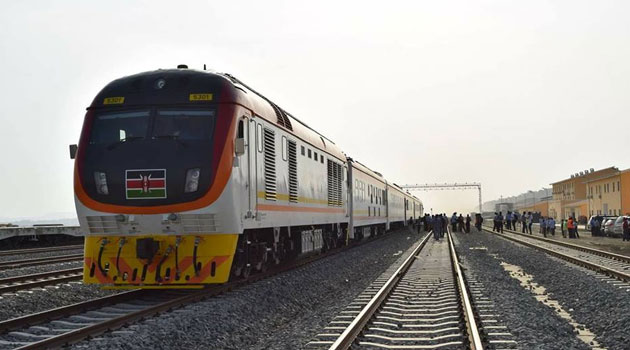
The second phase of the Standard Gauge Railway (SGR) project from Naivasha to Kisumu may never be fully actualised, after the Chinese government refused to fund the project demanding a proof of viability from the Kenyan Government.
The Chinese government faulted the project after Kenyan delegates carried blueprints to the China Africa Forum (FOCAC), hoping to secure funding for the project without proving its viability.
President Uhuru Kenyatta had requested a grant of half of the Ksh380 billion that the 267 stretch of the SGR line will cost.

“All documents are ready. However, when we engaged the Chinese government, it was agreed they do support it, but we need to complete the feasibility study, not just for Naivasha to Kisumu but also all the way from Mombasa to Kisumu so that we can establish its commercial viability,” said the Transport CS James Macharia after the meeting with Chinese officials.
Kenya and China Communications Construction Company had already signed a deal for the construction of the line.
In the first year of its operation, the Madaraka Express train operating on the SGR line raked in Ksh1 billion, which translates to Ksh2.7 million daily. With this amount, the SGR cannot meet its operational costs. The SGR runs on a Ksh1 billion operational cost, an amount that takes one year to earn.
This is what could have informed Chinese decision to halt funding the project, considering that the project is taking more than it can make. Just like business, for a business to borrow, it must be able to make more to meet its operational cost and make profit, a case different with SGR.

If SGR makes the constant Ksh1 billion without using a single penny, it will take Kenya 327 years to meet the cost of construction, of which part of it is a loan from China. Adding Kenya loans would mean more time for the loan repayment, inability to pay the loan or use of collected tax revenues (which is not enough for the county’s budget) to repay the loan leaving the country poorer.
The only way the SGR project could be viable is connecting it to Ugandan line before Tanzania-Rwanda SGR line. The lenders, China Exim Bank, could have realised how the project is a loss-making affair and avoided a meeting with Kenyan government officials, and instead sent executives to Kampala and Nairobi to conduct due diligence on the project.
Financial experts and analysts have continued to opine that the SGR project is not economically viable. Economist David Ndii last month said that the initial feasibility study conducted was shoddy and dishonest, the reason the project has failed to sustain itself.

“We tried to flag these issues but the government did not organise sufficient public participation and they did not disclose all the factors. These things are only coming to light now,” said Ndii, adding that the project might take another 20 years for it to break even.
Already, the cargo, which was supposed to be the biggest income earner for SGR has failed.

Before the launch of the service in January, the government had indicated that four freight trains would run daily — with a future outlook of eight daily trains — each carrying 216 twenty-foot equivalent units (TEUs).
This would mean that on each day, the Inland Container Deport would receive a minimum of 800 TEUs, making 5,600 TEUs weekly and 291,200 TEUs annually. But the train hit its highest number of more than 600 TEUs mid February, one-tenth of the envisioned capacity.